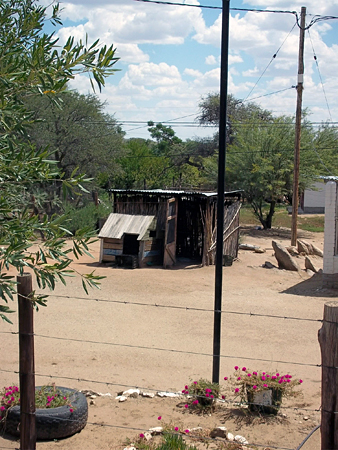History of Eksteenskuil

History of Eksteenskuil
Eksteenskuil (near Keimoes) is a rural coloured settlement in the Lower Orange River valley, in the Northern Cape Province, South Africa. The first few families settled there during the 1920s. The rest were awarded plots during the mid-1950s after the white farmers who originally cultivated the land were relocated to more productive land elsewhere. Coloured people from a wide area applied to move to Eksteenskuil and today’s residents can trace their family trees back to locations such as Poffadder, Kakamas and Namibia. Some of the new residents were ex-servicemen for many of whom a pension was their main income. Several new farmers were settled onto land areas that had previously been a single farm unit, which has imposed a problematic legacy in terms of viability for the smallholders ever since. Approximately 40% of farmers have officially gained ownership of their land whilst 60% are waiting for title and deed. Lack of deeds means lack of security for loans, investments and land extension. The area has been reviewed as part of the Transformation of Certain Coloured Rural Areas Act (TRANCRAA) process, which was finalised in November 2006.
The Afrikaans speaking farming population is largely coloured, although a small number of white commercial farmers operate in the area, especially at the entrance to Middle Island. A black underclass exists who largely reside in a compound on Rooikop island, providing casual labour. During the harvest and pruning season, migratory streams of people come into the area from other parts of South Africa. The vast majority of these provide labour for the commercial farmers. Approximately 600 people live in the Eksteenskuil area.
During the apartheid-era, Eksteenskuil had its own municipal offices based on Middle Island. However, as part of the post-apartheid re-organisation of local government it was merged into the Kai !Garib municipality, whose local offices are in Keimoes. This change in government organisation appears to have generated a sense of disenfranchisement within the Eksteenskuil community. Furthermore, the community at large have expected the Eksteenskuil Farmers’ Association (EFA) / Eksteenskuil Agricultural Co-operative (EAC) to fill the vacuum and perform services that are beyond their mandate / capacity.
